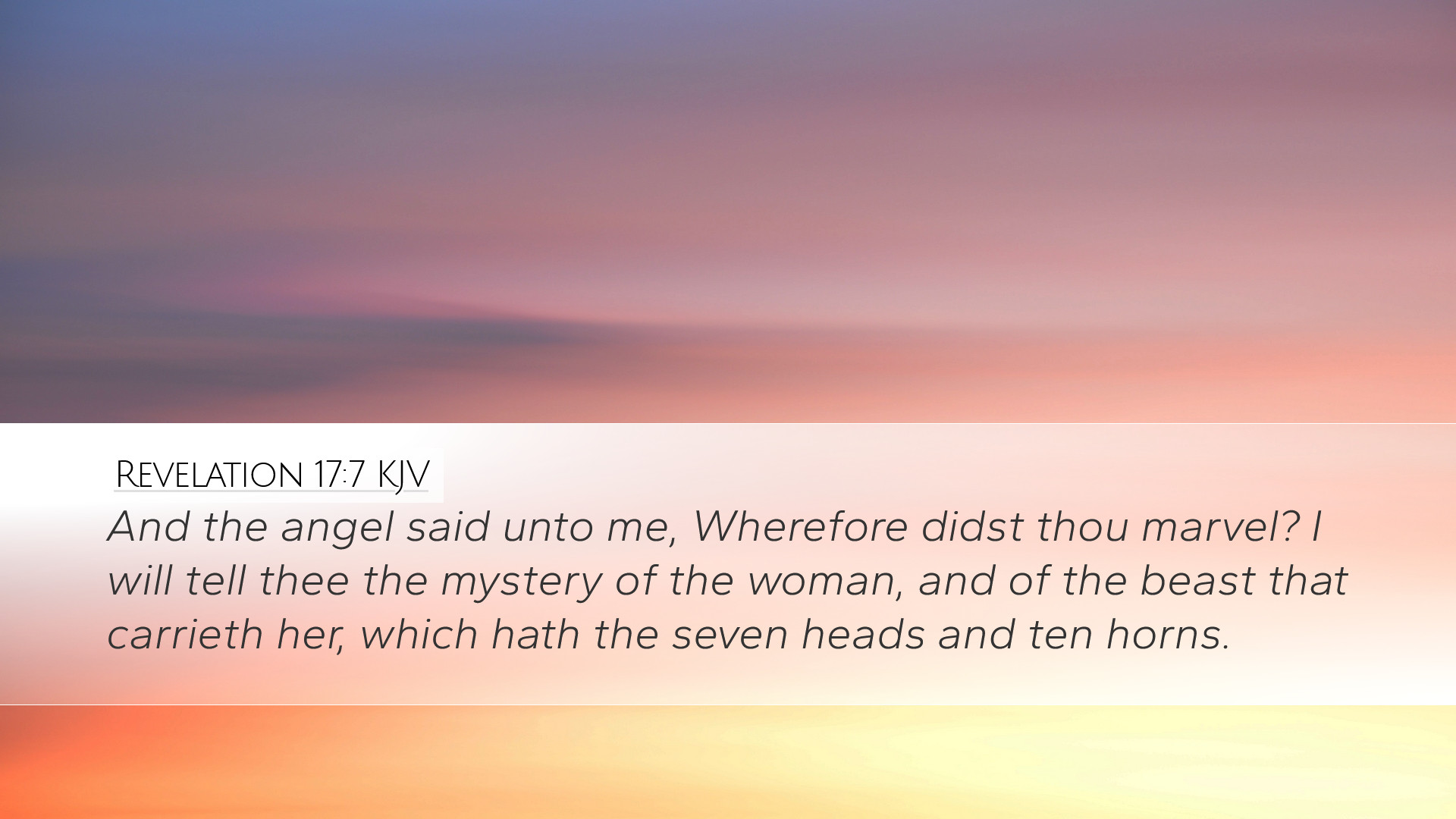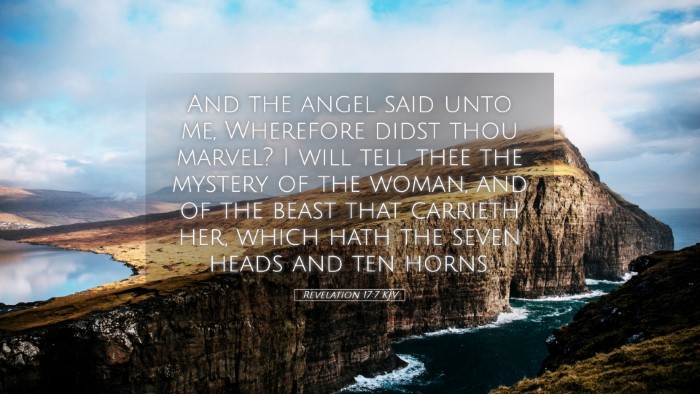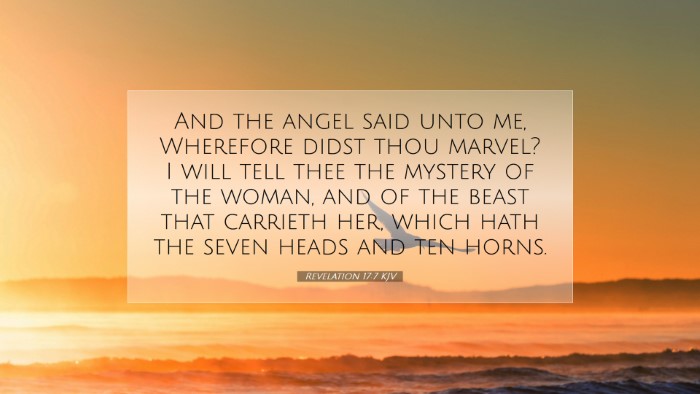Commentary on Revelation 17:7
Understanding the Verse: Revelation 17:7 states, "But the angel said to me, 'Why do you wonder? I will tell you the mystery of the woman and of the beast that carries her, which has the seven heads and ten horns.' This verse is pivotal as it sets the stage for the understanding of the complex imagery presented in Revelation 17. The angel provides a direct invitation for John to grasp the significance of the vision he beholds.
Role of the Angel: In the context of Revelation, angels frequently serve as messengers of God, unveiling divine mysteries. Matthew Henry notes that the angel's rhetorical question, "Why do you wonder?" implies that the revelations given to John are meant to be understood and are not merely for wonderment. The intention is to gain insight into the unfolding of God's plan.
The Mystery: Woman and Beast
Symbolism of the Woman: The woman represents a system or entity characterized by great influence and seduction in the world, often interpreted as a symbol of false religion or a corrupt political system. Albert Barnes highlights that the woman sits upon many waters, a symbol of her influence over multitudes. She embodies a seductive allure that draws many away from the purity of faith.
The Beast: The beast, described as having seven heads and ten horns, is a composite symbol representing power and authority. According to Adam Clarke, the seven heads are typically understood to represent seven mountains or kingdoms, while the ten horns symbolize ten kings or rulers that may arise in the eschatological framework. This imagery speaks to the great depth of evil and opposition to God that will emerge in the last days.
The Seven Heads and Ten Horns Explained
- Seven Heads: Traditionally, the seven heads have been identified with historical entities or even as a representation of the comprehensive nature of evil governance. The interpretation allows for a rich tapestry of meaning, encompassing different regimes and their opposition to God throughout history.
- Ten Horns: The horns are significant in biblical prophecy and often symbolize strength and authority. As Clarke notes, these horns signify the temporal powers that rise in rebellion against the divine order.
Pastoral Applications
The verse invites pastors to reflect on the nature of seduction in both personal and corporate contexts. Like the woman described, church communities can sometimes be led astray by appealing ideologies that seem benign but harbor greater danger. It challenges leaders to guard against influences that can divert congregations from the core tenets of faith.
Theological Reflections
For theologians, this passage offers fertile ground for exploring the dual themes of judgment and grace. The revelation of the beast and the woman serves as a stark reminder of the persistent struggle between good and evil, ultimately culminating in God’s sovereign victory over all adversaries. This duality invites contemplation on God's justice and mercy, and how believers are called to navigate the complexities of faith in a world riddled with moral ambiguities.
Conclusion
Revelation 17:7 transcends mere prophecy; it is an invitation to understand the deeper realities of spiritual warfare and the pervasive influence of evil. By analyzing the symbols of the woman and the beast, as well as the meanings crafted by the angel's message, believers are equipped to discern the perils around them and remain steadfast in their commitment to Christ. As they dive deeper into the scripture, they are reminded of the delicate balance between wonder and understanding as they pursue a more profound knowledge of God's eternal plan.


